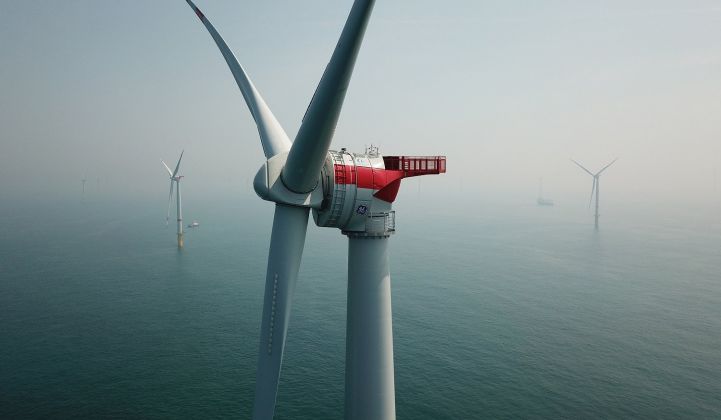Renewable energy did not give GE CEO Larry Culp much help last year as he looks to turn around the struggling American industrial giant.
GE’s Paris-based Renewable Energy unit, designated as a central plank of the company’s strategy for the future, reported a $666 million loss for the whole of 2019, compared to a $292 million profit the year before. All of GE’s other industrial segments turned a profit last year, including the long-struggling Power division.
Investors cheered GE's overall performance in 2019, including free cash flow from its industrial businesses of $2.3 billion, a figure that could rise to $4 billion in 2020. GE's stock price rose 10 percent on Wednesday after its earnings announcement, its highest level since 2018.
But the story is gloomier for the company's huge renewable energy division, where profit margin fell to a negative 4.3 percent.
“Looking across the segments, Renewables is the key operational focus for us in 2020,” Culp said on a call with analysts, adding that much of the company’s recent restructuring efforts have centered on the Renewables, Power and Corporate divisions.
“We know we’re going to be challenged in Renewables and probably will see them not improve their free cash performance — probably we'll see a step back in 2020,” Culp said.
GE is among the world’s leading suppliers of onshore wind turbines, and that business continues to put up strong numbers despite industrywide cost pressure.
At the same time, GE is spending heavily to secure a lasting place in the rapidly growing global offshore wind market; its 12-megawatt Haliade-X model is set to launch next year, and several big orders have already rolled in.
Offshore wind "is an area where we are an innovator," Culp said. "We think with Haliade-X we have an opportunity to bring an exciting technology to market in 2021 that will help improve our overall performance."
"But in the near term, [offshore wind] is an earnings and cash drag for us," Culp said.
The biggest long-term challenges for GE Renewable Energy look to be its businesses in hydropower and electrical grid equipment, both taken on as part of GE’s ill-considered acquisition of France’s Alstom in 2015. Less than two years after that deal was finalized, Jeffrey Immelt was out as CEO as GE’s share price plummeted.
“The focus in both Grid Solutions and in Hydro is simply on the turnaround,” Culp said on the call. “We’re working through complex projects, improving our underwriting framework, and focusing on daily execution in both our factories and in our field-service organization, as well as taking cost-reduction measures.”
Orders at GE Renewable Energy fell 10 percent in the fourth quarter to $4.7 billion, due to the “non-repeat of large deals at Hydro and Grid Solutions,” CFO Jamie Miller told analysts. Equipment orders fell 7 percent while services orders tumbled 22 percent.
There was a time when it was unclear whether GE would stand behind its renewables unit at all, given its dramatic and ongoing companywide restructuring. But Culp has expressed confidence in the division and the long-term attractiveness of the renewables market, and he continued to do so on Wednesday.
“Last week I was in Paris for operating reviews…and this reinforces my conviction that we can and will improve our performance in Renewables,” Culp said.
Still, the water looks choppy in the near term. “This journey to improve earnings and cash at Renewables will take time,” he said.




